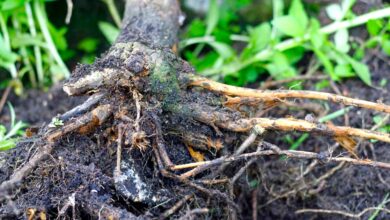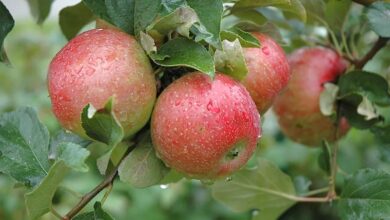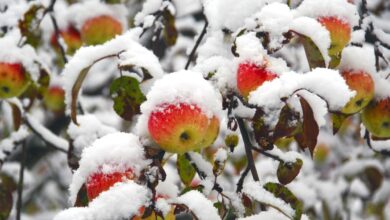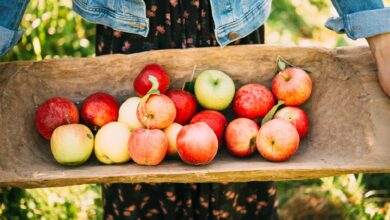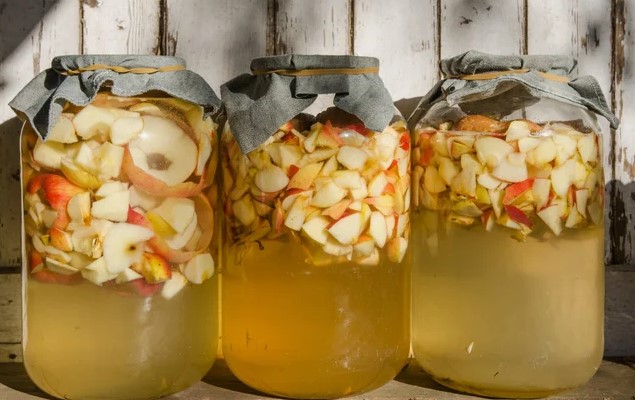
It might be time to learn how to make cider if you have an abundance of apples. The basic idea of all homemade apple cider recipes is the same, even though some have been passed down through the years. Continue reading to find out how to make hot apple cider, a fun project for the whole family.
Top Apples for Cider
Selecting the best apples for cider is a personal preference. Choose sweet apples like Cortland, Fuji, Gala, Golden Delicious, or Red Delicious if you like your cider to be sweeter. Pick tart apples like Braeburn, Jonathan, McIntosh, or Pink Lady if you prefer your cider acidic.
Naturally, you can also combine the two to create a sweet/tangy concoction that appeals to a wide range of palates.
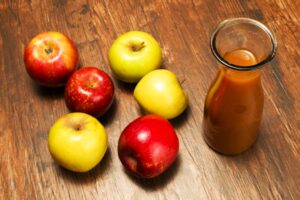
Firm, ripe, yet mature apples are ideal for cider. Apples don’t have to be perfect, but you should remove any spots that are rotten. A rotten apple might cause the liquid to ferment too quickly, ruining your cider.
To make one gallon of cider, how many apples are needed?
A gallon of cider will require between 30 to 40 apples, depending on their size. A bushel of apples will make 3 to 4 gallons (11–15 L.) of cider if you are buying them by the bushel. A bushel of apples comprises roughly 125 apples.
Concerning Cider Safety
The possibility of unpasteurized cider becoming tainted with food-borne diseases like E. coli is minimal yet plausible. Certain people may be more vulnerable to bacteria than others, such as the elderly, young children, or those with underlying medical conditions.
Although commercial cider producers must undergo extensive testing to guarantee the safety of their product, home producers can also reduce the dangers by pasteurizing or boiling cider before drinking.
How to Use a Press to Make Apple Cider
Traditionally, a crusher and press are used to extract the juice from apples. You could even own one of these or have seen them at commercial apple orchards.

The apples must first be cleaned, cored, and then cut into quarters. Make sure to totally chop out any portions that are decaying. Fill the crusher with the ready-to-eat apple. Once the crusher is sufficiently full, move the crushed apples to the press and squeeze the juice out with the handles.
Then, to get rid of any last bits, press the juice through a jelly bag. To get rid of any microorganisms, heat the juice to 160 degrees Fahrenheit (71 degrees Celsius). After letting the juice cool, transfer it into sanitized, brand-new, or recycled juice bottles. Either freeze for later use or keep chilled and eat within 5 days.
A Different Way to Make Apple Cider
You can use a juicer to make cider if you don’t have access to an apple press. You don’t have to core the apples in this instance, but you do need to cut the fruit into quarters and remove any decaying parts.
Juice until the pulp container starts to fill up. Gather the juice by pressing the pulp through a fresh cloth or cheesecloth. After the residual pulp has dried, it is called pommace and can be composted.
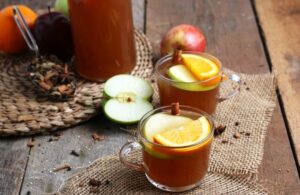
Heat the juice as described above to pasteurize it, and then bottle it as described above.
How Can Hot Apple Cider Be Made?
On a cold day, nothing smells better than hot apple cider boiling on the stove. Depending on the recipe, apple cider might include a few different ingredients, but the fundamental recipe is as follows.
- 950 milliliters (4 cups) of unsweetened apple juice
- A few black peppercorns
- Two grams (½ teaspoon) of whole cloves
- One gram (¼ teaspoon) of nutmeg
- a dash of orange zest *Pure maple syrup is optional for sweetness
To suit your taste, you can add more or less of the zest and spices. The maple syrup is no different. Hot apple cider is sweet to some and sour to others. Some add allspice berries, cinnamon sticks, or even lemon peel to their hot apple cider. Your cider’s level of spice is entirely up to you; there is no right or wrong way to do it.

